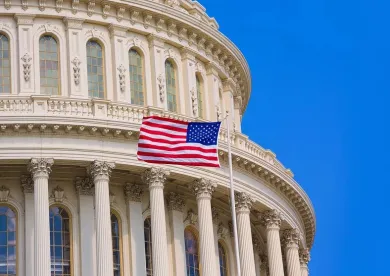DOL Proposes New Independent Contractor Test. On October 13, 2022, the U.S. Department of Labor’s Wage and Hour Division published a notice of proposed rulemaking—“Employee or Independent Contractor Classification Under the Fair Labor Standards Act”—to rescind the Trump-era independent contractor rule that was finalized in 2021 before President Biden assumed office. In its place, the DOL proposes a test for determining employee or independent contractor status that, rather than focus on two “core” factors of degree of control over the work and the worker’s opportunity for profit or loss, “[would] return to a totality-of-the-circumstances analysis of the economic reality test in which the factors do not have a predetermined weight and are considered in view of the economic reality of the whole activity.” These factors are as follows:
-
Opportunity for profit or loss depending on managerial skill
-
Investments by the worker and the employer
-
Degree of permanence of the work relationship
-
Nature and degree of control (this factor includes an analysis of the following subfactors: scheduling, supervision, setting a price for goods or services, and the ability to work for others)
-
Extent to which the work performed is an integral part of the employer’s business
-
Skill and initiative
-
Additional factors (noting that “the enumerated factors are not to be applied mechanically but should be viewed along with any other relevant facts in light of whether they indicate economic dependence or independence”)
While not necessarily novel, the lengthy analysis of equally weighted factors and subfactors is likely to prove confusing and unreliable for many employers. Importantly, the DOL states that it “believes it is legally constrained from adopting an ABC test” that has proved so controversial in California. Comments on the proposal are due by November 28, 2022. Steven F. Pockrass, Taylor E. Gillan, Charles E. McDonald, III, and Zachary V. Zagger have more on this development.
FOIA Reminder for Federal Contractors. If you are a federal contractor, have you filed your Freedom of Information Act (FOIA) objection letter yet? The Buzz previously directed readers to Lauren Hicks’s analysis of the situation at the Office of Federal Contract Compliance Programs (OFCCP) concerning the potential public disclosure—pursuant to a FOIA request from the media—of federal contractors’ EEO-1 data. Contractors that wish to object to the release of this information must notify OFCCP by October 19, 2022.
Railroad Row Redux. Several weeks ago, when it seemed as though the nation had avoided a potentially disastrous national freight rail strike, the Buzz was quick to note that the tentative agreement between rail carriers and labor unions still needed to be approved by rank-and-file union members and that things could still go off the rails. Fast-forward to this week, and we have now learned that the third-largest railroad union in the United States has rejected the proposed deal. Although there are multiple unions involved in the bargaining, even one union’s decision to go on strike could have national implications, because other unions are unlikely to cross the picket line. So while this is not the end of the line just yet, the situation absolutely bears watching. The parties have until November 19, 2022, to reach a deal.
Will Labor/Employment Provisions Hitch a Ride on the NDAA? This week, the U.S. Senate started debate on the fiscal year 2023 National Defense Authorization Act (NDAA). The bill is considered “must-pass” legislation and will be a top priority for senators during the post-election lame-duck session of the U.S. Congress. As such, it will be viewed as a prime vehicle upon which senators can attach their specific policy preferences, even if seemingly unrelated to national defense. More than 900 amendments to the bill have already been filed. Readers may recall that the U.S. House of Representatives included multiple labor and employment-related amendments in the version of the NDAA that it passed in July 2022. The Buzz will be monitoring whether these—or other labor and employment provisions—make it into a final bill.
Happy Birthday, White House. On October 13, 1792—230 years ago this week—the cornerstone of the White House was laid. Using a design provided by Irish architect James Hoban, French engineer Pierre Charles L’Enfant oversaw construction of the mansion, which was largely built by free and enslaved African Americans. Eight years later, in 1800, President John Adams and his wife, Abigail, became the first occupants of the President’s House or Executive Mansion. (The building was formally named the “White House” by President Theodore Roosevelt in 1901 via executive order.) Over the years, the White House has been remodeled, renovated, and expanded many times, most notably when it was rebuilt after it was burned by British soldiers during the War of 1812. Today, the White House boasts 132 rooms, 35 bathrooms, 28 fireplaces, 8 staircases, and 3 elevators.




 />i
/>i
